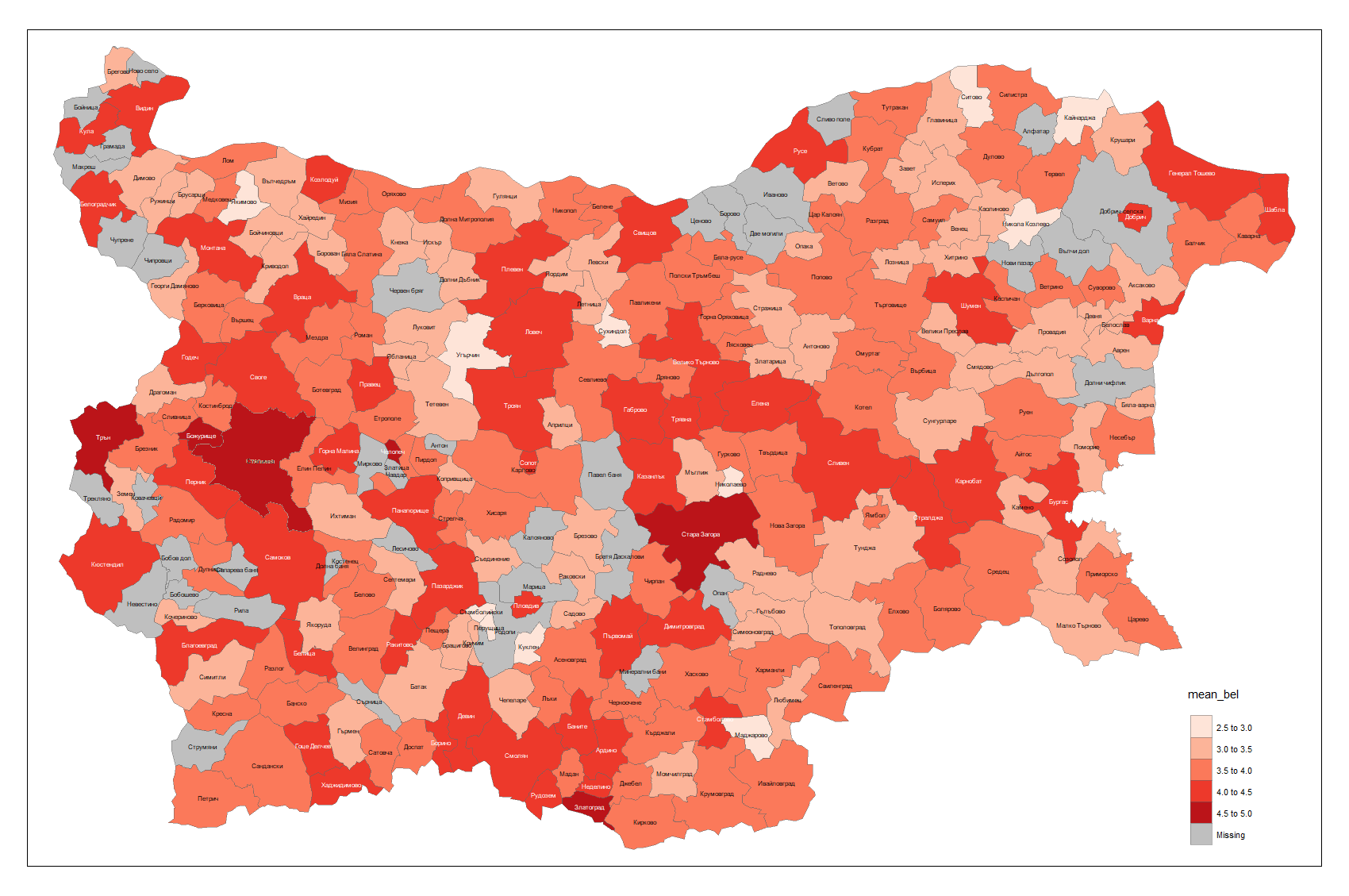Industry and Information Technology - Which Regions Developed the Most?
During the past week the 2018 data for employment and labour costs on district level from the annual statistics has been published. This statistic is particularly interesting because it comes from company reports and is therefore exhaustive, as opposed to the Labour force survey, for example, which is a sample survey. The overall picture for 2018 is already known.
During the past week the 2018 data for employment and labour costs on district level from the annual statistics has been published. This statistic is particularly interesting because it comes from company reports and is therefore exhaustive, as opposed to the Labour force survey, for example, which is a sample survey. The overall picture for 2018 is already known – the number of employees is only slightly increasing and is now about 2 320 thousand people, and the average salary in the country is increasing by over 10%. In 2018, the average monthly salary in Bulgaria ranges from 752 BGN in Blagoevgrad district to 1 586 BGN in the capital Sofia. However, breakdown by sector and by region is only now available and is particularly interesting.
An important focus is the manufacturing industry where more than 1/5 of the country's employees are traditionally employed. This is a sector where, following the major downturn in 2008-2010 (from 600 to 500 thousand employees), there seems to be little change at first glance - since 2010 the number of employees has been relatively constant, but in 2017 and 2018 they reached 520 000. However, the big change is within the industry itself - there is a constant decrease in employment in traditional sectors, such as clothing and furniture production (where the added value is EUR 6-8 thousand per employee), but at the same time there is growth in the production of electrical equipment, machinery, computer equipment, cars and other vehicles (added value of EUR 15-20 thousand per employee). That is why in the last 7-8 years we have been talking about the transformation of the industry, not so much about growth in terms of the number of employees.
The industry breakdown on district level shows where the dynamics are more noticeable. Although almost 100 000 fewer people worked in the industry in 2018 than in 2008, some areas not only did not lose, but even won more employees. In 2018 the districts Sofia, Plovdiv, Smolyan and Yambol had more people employed in industries compared to 2008, in Targovishte and Kardzhali the number is the same compared to 2008. While Plovdiv was a leader in the accumulation of new employees in the industry in 2016 and 2017, in 2018 the capital and the surrounding industrial zones on the territory of Sofia District came to fore, as well as the districts of Pazardzhik and Haskovo. The leader for 2018 is Haskovo with a growth of 7% (+1 000 employees) in just one year. For the first time a South Central Region takes away the first place from the Southwest by the total number of employees in the industry.
The good news, in terms of salaries, is that almost in all districts the salaries in manufacturing are already above the average. In 2013, for example, the year after which the industry started to increase slightly, the number of employees in more than half of the districts, including the ones in South Central region, the average salary in industry lags (10-15%) than the average for the district. In 2018, in more than 20 districts, including the ones in the South Central region, manufacturing salaries outstrip the district average. Apparently, the transformation of the Bulgarian industry into higher value-added sectors is leading to higher pay. It is logical that this process will continue and the skilled labour in the factories will gradually become higher-paid than others - be it seasonal work abroad or at seaside, farm labour, etc.
Let’s take a look at the most dynamic sector - information and communication technologies (ICT), in 2018 it creates the most job places (+4593 employees), and salaries are 2.7 times higher than those in the manufacturing industry. Here we can add the sector of professional activities (+2083 employees), which includes outsourcing and where salaries are 1.6 times higher than those in the manufacturing industry. In these sectors, however, the capital Sofia is the absolute leader - the growth of the ICT sector employed in the capital in 2018 is 3929, followed by Plovdiv with a growth of 400 people and Varna with 261. In all the other districts there is a negligible increase or even decline.
The total number of employees in the ICT sector in 2018 in these three leading districts is divided as follows: Sofia – 79 050 employees, Plovdiv – 4409, and Varna – 3796. In the ICT sector the following in the list of districts are Burgas (1230 employees), Ruse (890 employees), Veliko Tarnovo (830 employees) and Stara Zagora (695 employees) – there is no tangible growth in employment in 2018. There is an upward growth of salaries in the ICT sector in these cities, which shows a positive dynamic, but there is still a lack of growth in employment, which has been observed in Plovdiv, for example, in the last 4-5 years.
The overall picture in these two sectors is that the manufacturing industry has a marked regional orientation, with South Central region pulling ahead - first with Plovdiv and Smolyan, and in the last year with good results from Pazardzhik and Haskovo. Sofia and the industrial areas around the capital also show very good dynamics in 2018. In the ICT sector, the capital continues to be an absolute leader, which also increases salaries. Only Varna and Plovdiv manage to have a noticeable growth in the number of employees in the IT technologies and this has its effect on salaries. Secondary centres - such as Burgas, Ruse and Veliko Tarnovo still do not manage to follow the dynamics of the ICT sector. However, there is potential - also backed by various news stories in the current 2019, so it would be normal to see some movement in the near future.


